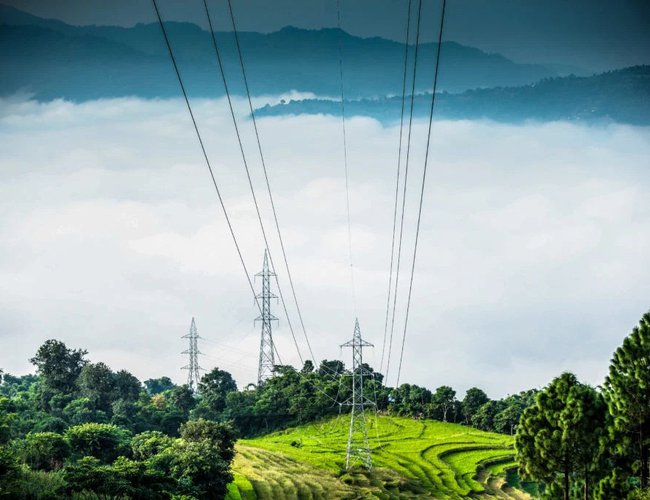
In February 2021, India Central Electricity Authority published “Procedure for approval and facilitating the import of Electricity”. Procedure for approval and facilitating import/ export by the designated authority. But authority doesn’t include representation from other country representation in joint operation committees for grid security, safety, and operation. This might create a huddle in the future if not managed properly. Procedure 6.3 (ii) has highlighted to “submit the permission to export power to India from the respective government of the neighboring country”. Until now, In Nepal Power trade department of Nepal Electricity Authority is responsible for both domestic and cross border electricity trade. Question might arise what shall be the role of Nepal, on enforcement of independent regulatory agency in future? Similarly, Procedure 6.5 (iii) “Buyer from a neighboring country is able to buy only approved exporters of India”. Seriously questioning, if there is no investment by India, she shall not buy from neighborhood country?
Even though Nepal has strength for cross border trade. First, Nepal Electricity Authority (NEA) has power trade department. Its function (i) Power Purchase Agreement (PPA) processing and signing; (ii) PPA implementation, monitoring, and execution till commercial operation. (iii) Operational Administration and monitoring. Nepal Electricity Authority has imported 1,729 GWh and export 107 GWh of electricity through various transmission links in FY 2019/20. Import has been decreased by 38.55 %. It’s a good sign country in process of being independent in the energy sector.
Second, Nepal transmission projects such as (i) Pancheshwar project are line-up for construction of transmission line up to Nepal Border from the Tanakpur power station. ;(ii) Upper Karnali project to the Bareilly Pooling Station of Power Grid Corporation of India in Uttar Pradesh (Schedule 9 of PDA); (iii) Ratmate- Rasuwagadhi- Kerung 400 Kv (China); Kushaha- Kataiya 132 kV Second circuit Transmission Line (India); are yet to come in operation. (iv) Inaruwa Purniya 400kV, New Lumki (Dododhara) – Bareli, Kushwaha- Kataiya 132 kV second circuit and Mainahiya - Sampatiya 132 kV transmission line are in progressive stage. Once these projects came into operation, hydropower developers increase return on investment through export sales to a neighbouring state.
Third, few transmission lines have come into operation for CBET between India and Nepal (NEA 2016). (i) Dhaklebar Muzaffarpur Substation 400 kV coming into operation. (ii) Butwal (Nepal)–Gorakhpur (India) 400 kV transmission line is under development.
Muzaffarpur – Dhalkebar transmission shall be transmitted through, Power Transmission Company of Nepal Limited has been established with JV Company of Nepal Electricity Authority (NEA) (50%), PowerGrid Corporation of India (26%), Hydroelectricity Investment and Development Company Limited (14%) and Energy Development Company (10%). Company main objective to build, maintained and operate transmission system between Nepal and India. These substations and transmission line shall facilitate bilateral and regional power trade and enhance national grid for domestic energy distribution.
Fourth, Nepal has established an independent Nepal Electricity Regulatory Commission (NERC) to govern the electricity market. Electricity bill in parliament which unbundle vertically integrated electricity sector enabling to regional electricity trading for international trading. These reforms in the electricity sector shall create a regional and regulatory framework for power trading. But the question might arise to regulators how in future regulation can balance energy independence with economic benefits for regional interference?
Fifth, Nepal has already signed an MoU with Bangladesh for power trading, at the Bay of Bengal Initiative for Multi-Sectoral Technical and Economic Cooperation (BIMSTEC) summit in September 2018. MoU envisages the establishment of the BIMSTEC Grid Interconnection Coordination Committee (BGICC) to undertake the BIMSTEC Grid Interconnection Master Plan Study. The MoU will open up avenues for energy trade in the region. This also shows Bangladesh's desire to import hydropower from Nepal using the Indian transmission network.
Six, Nepal highest consumption in the December to February (Winter months) while India June to September (Nepal monsoon) and Bangladesh April to June. This creates an opportunity for Nepal to export electricity to the south Asian market.
Thus, it clearly shows Nepal has huge strength for cross-border electricity trade. But the Implementation of CBET depends on Nepal utility laws and regulatory guideline. Nonetheless, there is weakness that always strikes. (i) Political commitment and Political leadership, to support for development of hydropower and for establishing a regional electricity market. (ii) No right of way to trade with Bhutan and Bangladesh, with restrictive policies of the Indian Power Ministry and Central Electricity Regulatory Commission.
Recently, With the establishment of Nepal Power Exchange Ltd’ as a power trading company, Independent Power Purchase Association (IPPA) has signed 341 PPA with NEA with a combined capacity of 5978.134 MW for electricity generation. Thus, private electricity producers are also a concerned about making necessary policy and legal arrangements for cross-border electricity trade. Despite these risks can be mitigated through legal agreement for power purchase and the used of the transmission network services by necessary payment security structures and specified dispute resolution. Power Trade Agreement 2014 (PTA) doesn’t talk about risk mitigation but the CBTE guideline talks about risk mitigation through dispute resolution.
Academician and energy practitioner has found energy issues and policymaker must be a concern on erasing risk during power trading. The literature review pointed out energy issues on (i) Policy issues, (ii) Security issues, (iii) Spillover effect, (iv) Taxation issues, (v) Repatriation of earning, (vi) Transaction cost, (vii) Tariff determination and exchange rate (viii) Energy supply, and demand management. (ix) Market maker. (x) Intellectual property issues (x) Trade remedies (xi) license issue (xii) Technical barriers to trade (Connectivity issues, pricing of traded commodity, demand for financial guarantees, access to trading routes. returns, and associated risks). These issues must be incorporated in an effective manner by policymakers to facilitate the private sector by providing business opportunities.
In addition, disclosure and transparency have risen around the globe. Thus, international accounting standards now required more disclosure specifically in an energy project. For example, International Extractive Industries Transparency Initiative required signatory state and investor to disclose the detail of their taxation relationship and beneficial owner of companies, and so on. Risk as social license to operate has been formalized through contract due to high-profile cases in Colombia and Tanzania energy project. On another hand, South Asian neighbours are mainly impeded by barriers in transmission capacity, access to primary resources and lack of market makers, political instability, lack of economic incentives, were India’s preference for bilateralism.
Lastly, Nepal should formulate its own guideline and economic strategy. The strategy must revolve around fulfilling its own domestic requirement rather than exporting, no matter which political party is in government. No high ambition but proper vision and cooperation must be present in the paper. Previously, Nepal has sign bilateral Power Trade Agreement (PTA) and Guideline on Cross border Trade of Electricity (CBET) with India.

















